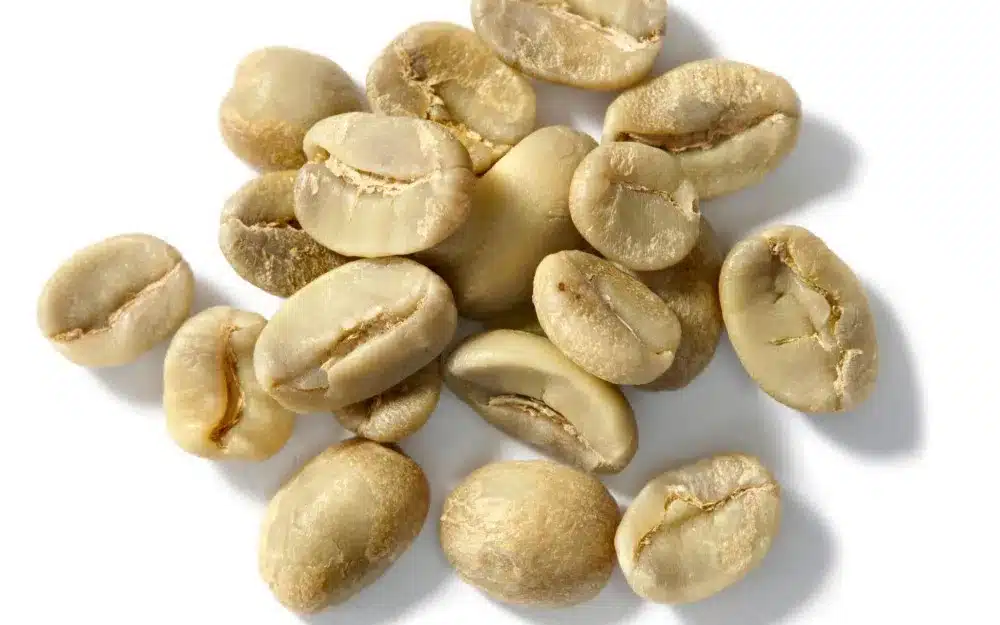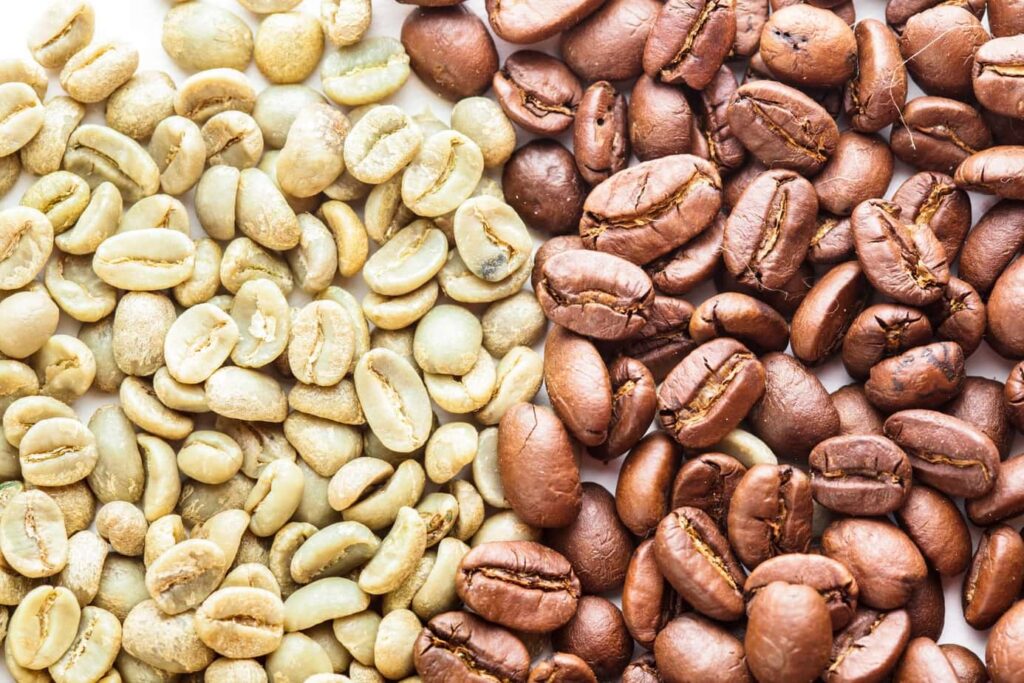Coffee trends always captivate consumers with an appealing variety. While looking for new fads, I stumbled upon a new term: white coffee. You have always been drinking dark black coffee, be it a long shot or luxurious Luwak coffee. But hold on, if you are wondering what white coffee is, it is simply those grains roasted half and at a lower temperature to bring a white-colored mixture. This is what we call a light-roasted coffee. If we define it in terms of roasting, it is roasted on a low level to get the desired intensity and look. So, in this article guide, we’ll discuss the concept behind this coffee and also its unique characteristics.

What is White Coffee?
I know you might be surprised to know that the coffee beans can be white instead of dark colored all the time. So, if you have come across such a word and now probably wonder what is white coffee, you have come to the right place. It simply depends on the roast level. Let’s delve deep into this concept.
Significance and Features
Often called “kopi putih” in Malaysia, white coffee is an interesting alternative to dark-roasted coffee. A special roasting procedure achieves the light roast that distinguishes white coffee. White coffee beans are roasted for a shorter period of time at lower temperatures than their darker-roasting counterpart. However, the latter goes through a lengthy roasting process at high temperatures until the beans get a deep, rich color. This meticulous roasting process preserves the delicate tastes and natural oils in the beans, yielding a much lighter-tasting coffee.

White Coffee’s History
Now that you know what is coffee, you need to have some insights about its origin and history too.
Malaysian Heritage
The colorful streets of Malaysia are where white coffee first appeared, and it has been loved there for many years. Historians believe that white coffee originated in the early 20th century, possibly due to Chinese immigrants who arrived in Malaysia, although its exact origins remain largely unknown. White coffee has grown to be an essential component of Malaysian culture over time, permeating both the country’s social structure and culinary legacy. People now appreciate coffee not only in Malaysia but also in many other countries due to its distinct flavor and long history.

Distinct Flavor Profile of White Coffee
It is well understood that the flavor profile of white espresso differs slightly from that of regular dark coffee. So, here I am with a quick analysis of its flavor. The white roast has less caffeine, making it a less intense beverage than the usual dark roast.
Intricate Flavor Experience
White coffee is unique due to its unmatched flavor character. This coffee has a medium roast that entices the palate with a complex flavor profile. While dark-roasted coffee delivers a strong, robust flavor, this coffee offers a softer, less bitter flavor with hints of fruity or floral notes and a delicate nuttiness. This subtle harmony of flavors is a result of the careful roasting process, which brings out the natural qualities of the coffee beans. A journey of discovery, each sip of this coffee reveals layers of depth and richness that captivate the taste and create an enduring impression.

What is White Coffee Made of?
Components and Roasting Method
The basic components of white coffee are the same as those of regular coffee: water and premium coffee beans. But the roasting process is what really distinguishes white coffee. Roasters carefully roast selected coffee beans for a shorter period of time at lower temperatures, usually between 325°F and 350°F. This gentle roasting process gives the finished drink a lighter hue while preserving the subtle nuances of the beans. The end product is a fragrant, silky drink that tastes noticeably softer than its dark-roasted sibling.
You can check out the method of preparing white coffee in this article.
Health Benefits of White Coffee
Just like any other type of coffee, these beans are somehow linked to several health benefits. Here are some of the benefits one can get with a moderate intake of this coffee.
Potential Benefits
Beyond its wonderful scent and flavor, these coffee beans might provide a few health benefits. Although there is no scientific study on the precise effects of lighter roasts, darker roasts of this coffee might have some benefits.
- Antioxidant Content: By preserving a larger concentration of antioxidants in the coffee beans, the light roasting process could lower the risk of chronic diseases and counteract oxidative stress.
- Reduced Acidity: Compared to dark-roasted coffee, this coffee is frequently less acidic, which makes it kinder to the stomach and possibly more appropriate for people with gastrointestinal problems or acid sensitivity.
- Lower Bitterness: This coffee offers a smoother, more palatable alternative to conventional coffee, which can appeal to people who find traditional coffee too harsh or intense.

White Coffee Varieties
Changes and Preparations
There are many different ways to prepare this coffee, and each one puts a special spin on this popular beverage. These twists and takes are what makes this coffee so special.
- White Espresso: A potent shot of this coffee that embodies the subtlety and sophistication of a light roast.
- White Latte or Cappuccino: Sophisticated drinks that combine the rich, creamy texture of steamed milk with the subtle notes of this coffee, providing a balanced combination of sweetness and caffeine.
- Iced White Coffee: A cold, energizing take on classic iced coffee, this beverage combines the crispness of chilled coffee with the creamy sweetness of milk or cream. It’s perfect for warm days.
White coffee is a fascinating blend of flavor, artistry, and tradition that appeals to coffee drinkers all over the world. With its modest beginnings in Malaysia and widespread appeal, this coffee is the ideal example of the union of modernity and tradition. This type of coffee offers a welcome change from the norm with its unique flavor, milder roast, and possible health benefits. It entices connoisseurs to relish each sip and set off on an adventure of exploration and discovery. Whether consumed as an espresso on its own or as part of a delicious latte, coffee lovers still favor this coffee, which honors the vast diversity of coffee culture.

Difference Between Regular Coffee and White Coffee
In order to discern the differences between ordinary coffee and white coffee, it is important to scrutinize their individual roasting methods, taste profiles, and general attributes. Although the coffee beans used in both varieties are the same, their roasting and preparation methods distinguish them.
Roasting Method
Regular Coffee
- Roasting: A medium-to-dark roast is usually used for regular coffee. For a longer period of time, the beans are roasted at high temperatures, between 370°F and 540°F (188°C and 282°C). The coffee has a rich, robust flavor because of the deeper roasting technique that extracts the oils from the beans.
White Coffee
- Roasting Method: A mild roast is what distinguishes this coffee. Roasters heat the beans for a shorter amount of time at lower temperatures, usually between 325°F and 350°F (163°C and 177°C). As a result, the roasting process preserves more of the beans’ natural tastes and chemicals, giving them a milder flavor and lighter color.
Flavor Profile
Regular Coffee
- Taste: Roasting regular coffee for a longer period gives it a strong, frequently bitter flavor with noticeable caramelization undertones.More intense roasts tend to have more noticeable bitterness.
White Coffee
- Taste: This coffee has a softer, less bitter flavor that is frequently accompanied by a trace of nuttiness and floral or fruity overtones. A smoother, more complex flavor results from the mild roasting of the coffee, which keeps more of the original bean characteristics.
Caffeine Content
Regular Coffee
- Caffeine Levels: Regular coffee can have varying amounts of caffeine. Because the longer roasting process loses some caffeine, darker roasts often have slightly less caffeine than lighter roasts.
White Coffee
- Caffeine Levels: This coffee often contains more caffeine due to its shorter roasting period, which keeps more of the caffeine intact and gives it a stronger kick.
Health Benefits
Regular Coffee
- Antioxidants: Chlorogenic acid, which is abundant in regular coffee, is one type of antioxidant that can help lower inflammation and shield the body from certain illnesses.
- Acidity: Regular coffee has a higher acidity level, which can make it uncomfortable for people who have stomach problems or acid sensitivity.
White Coffee
- Antioxidants: Due to its lighter roast, this coffee can retain more chlorogenic acid and other healthy ingredients, which could lead to increased health benefits.
- Acidity: This coffee is usually less acidic than black coffee. Therefore, people who are sensitive to acid will find it easier to digest.
Conclusion
Summing up, the article covered details on white coffee, a delightful twist on regular coffee. For those who love coffee and try out every other recipe to bless their tastebuds, white coffee is a must-try. Moreover, a detailed explanation of the difference between regular coffee and white coffee has been provided to offer a more comprehensive understanding. So, read about its distinct flavor profile and enjoy each flavor note with more precision.



